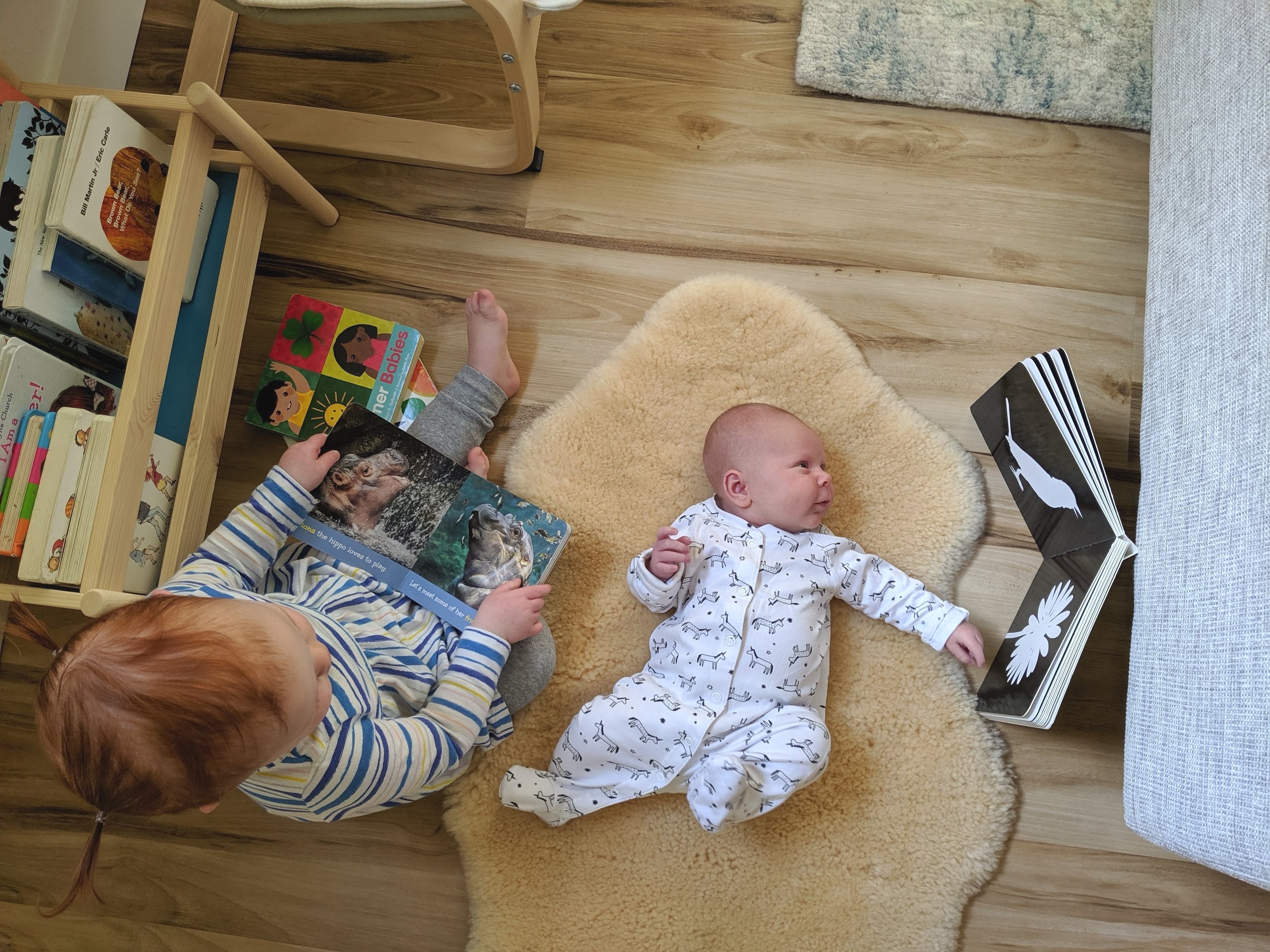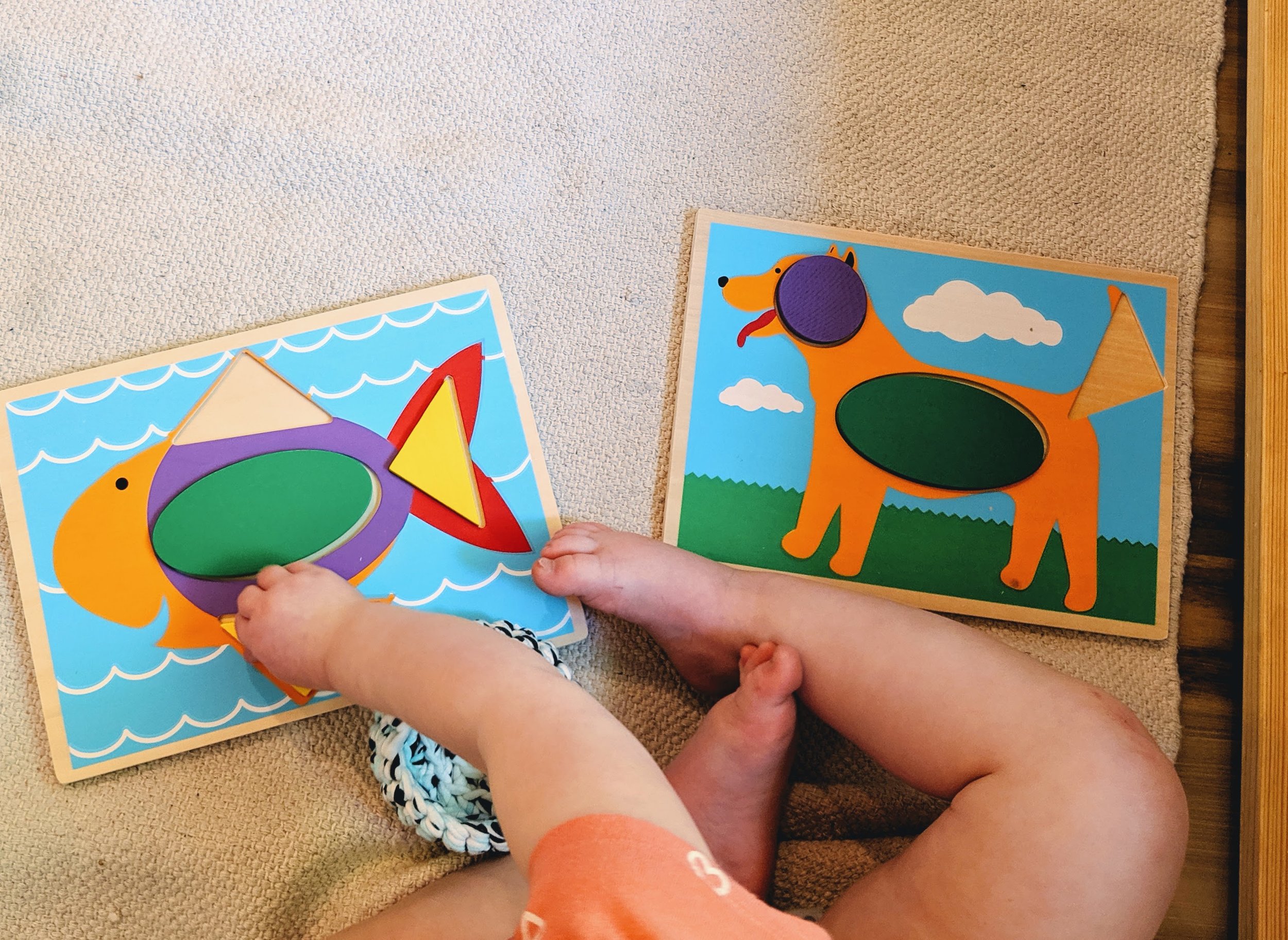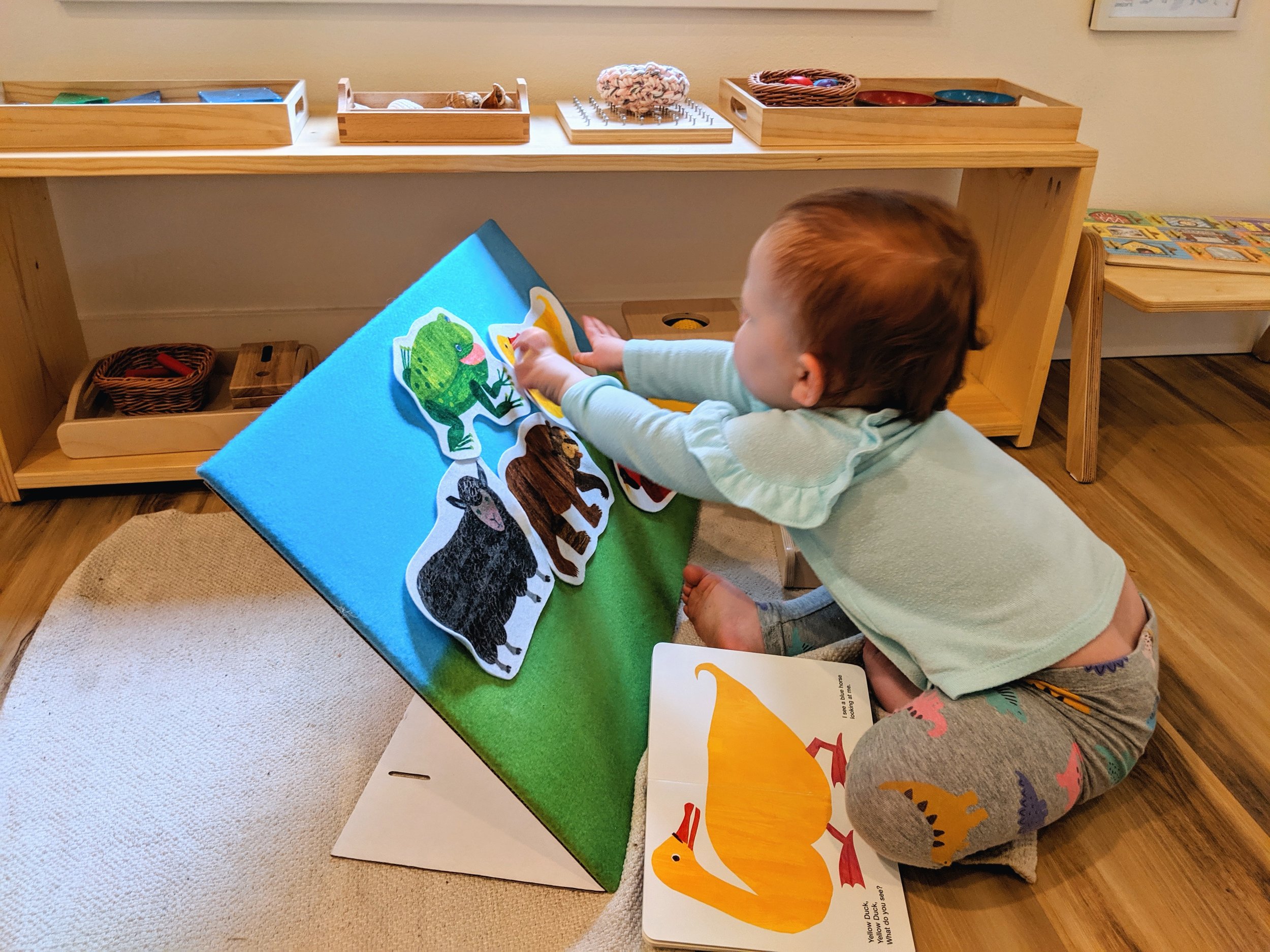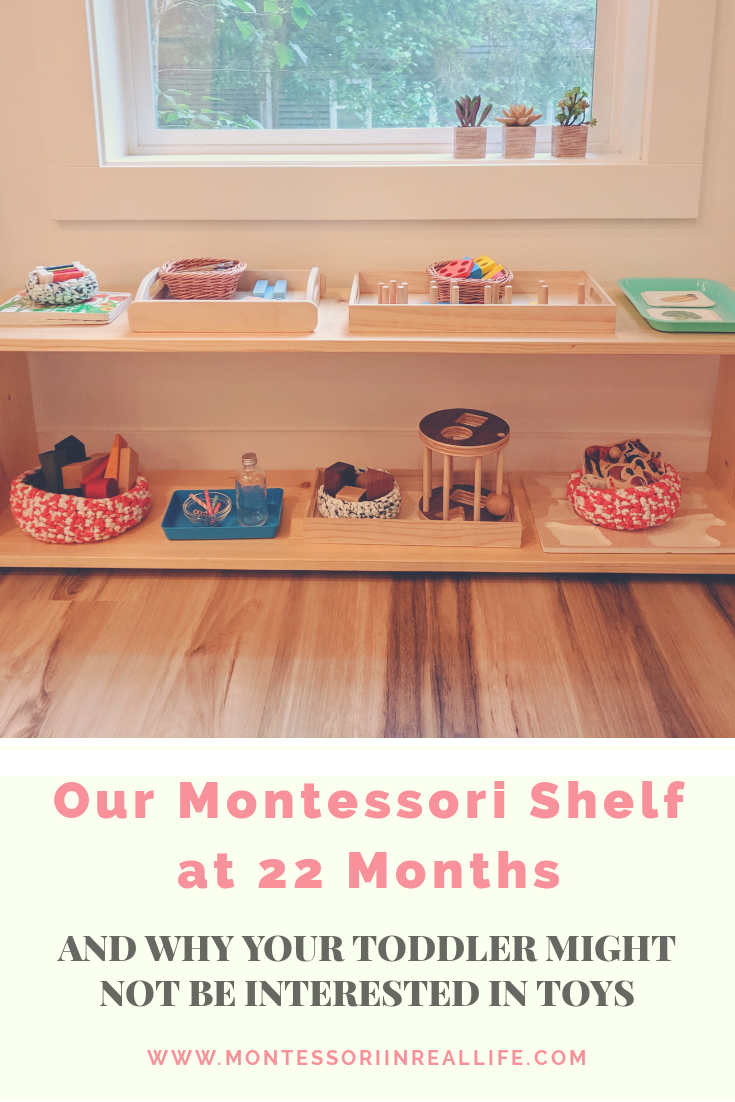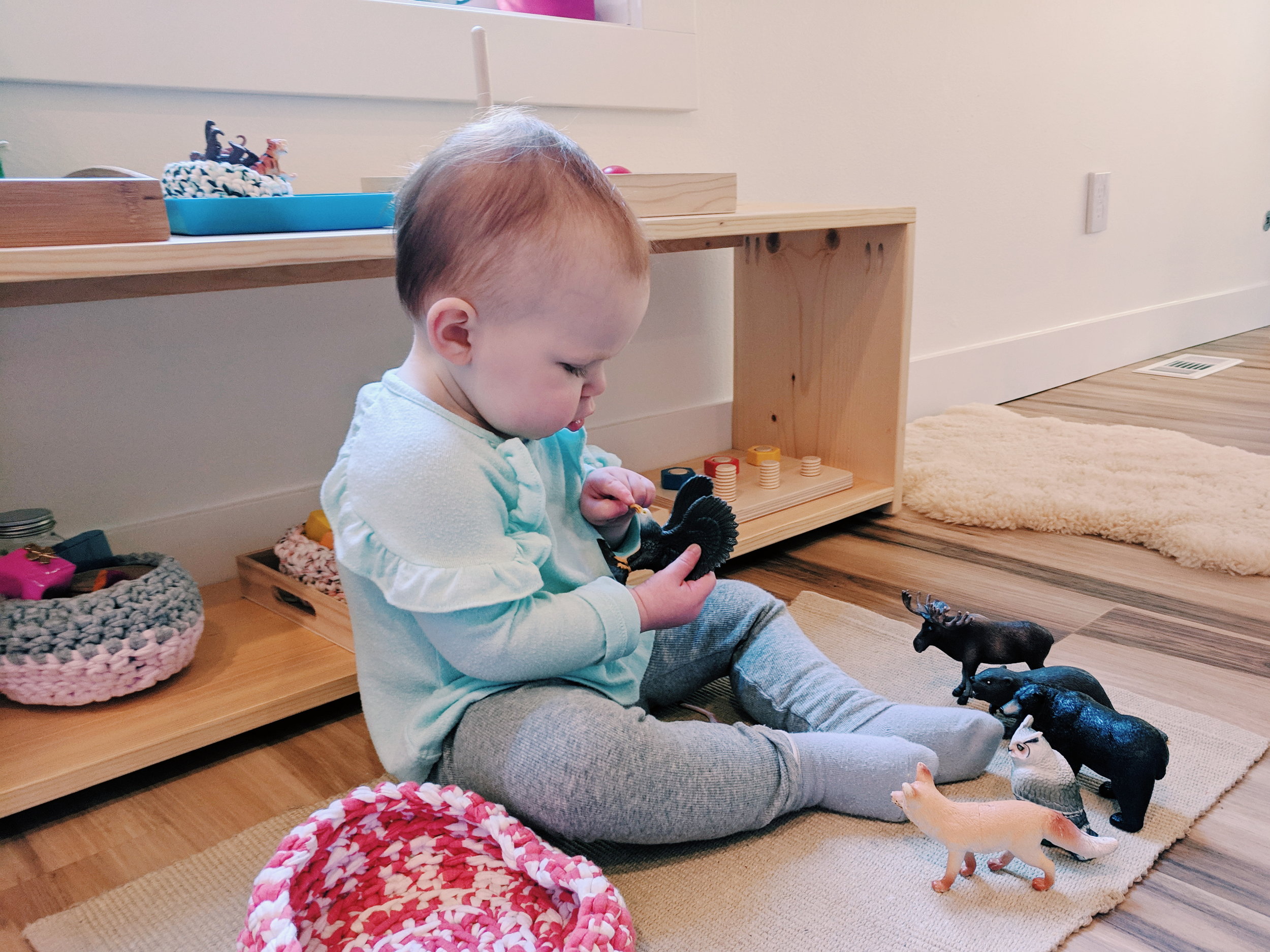Montessori-Inspired Materials at 24 Months
Montessori in Real Life
How are we 2 days away from D turning 2 years old?! It seems like just yesterday she was the same size as baby S. Though it makes me sad to see her grow up, I am also so in awe of the little person she is becoming. She is stubborn but sweet, confident but cautious, and focused but oh-so-silly. She has really shone this past month in her new role as big sister. Though she has her moments of feeling jealous or impatient, she clearly adores her baby brother and helping care for him.
Now that we are starting to settle back into a (new) routine with two children, D has been showing a renewed interest in her shelf work. While some of these works are traditional Montessori materials, others I would classify more as Montessori-inspired. :) As per usual, these materials are catering to the types of things D has shown an interest in lately, such as counting, sorting, and (always) open/close. I also try to balance materaisl that I know she can master (color sorting) with challenging ones (geoboard). Here are links and a short description for each material on her shelf right now:
Peg Number Boards - D has taken an interest in counting, mostly “one two three” but has also started differentiating between one and two objects. She can more easily work through the abstract concept of numbers with these concrete pegs and boards. As Maria Montessori said, “What the hand does the mind remembers”. Though this set comes with 10 boards, we are starting with just the first three.
Animal Pattern Blocks - Melissa and Doug always has fun wooden Montessori-ish toys, and this is no exception. I love that these boards come in a pack of ten to keep busy toddlers entertained. As these are fairly simple, I have been putting two boards out at a time, with the matching shapes in a basket for D to match and create patterns with.
Shell Sorting - I love this little sorting tray and have found lots of uses to help D sort by color, shape, and category. As we have been spending a lot of time at the beach, she’s enjoying matching and sorting the types of shells this week.
Bird Color Sorting - Another sorting work, because D, like many toddlers, loves the transferring aspect. As she sorts the birds by color and moves them to their corresponding bowls, she tells me they are “taking naps”. ;) There are so many uses for these little birds, and the set comes with both small and large birds in five different colors. We started with two colors and now sort three or four at a time.
Brown Bear Felt Animals and Felt Board - This felt board has been a big hit at our house, and even more so now with felt animals that go with one of her favorite books, Brown Bear, Brown Bear. She likes to have me read the book aloud as she finds the animals and puts them on the board one at at time, to match the story.
Magna-Tiles - These are a great open-ended activity, and what toddler doesn’t like magnets? This one is still pretty tricky for D to actually construct with, but it’s a fun one for us to work on together to build towers or just stack magnet shapes together. This has been a good activity for teaching cause and effect as well.
Wooden Geoboard - Geoboards are one of those great materials that grows with children and can be fun for years. For D, just stretching the rubber bands to fit on the board is a challenge, but she is very persistent in wanting to do this work. She does ask for my help, and I try to start each one and let her finish. For older toddlers, there are pattern cards to create pictures on the geoboard!
Hide and Seek Activity Board - This has been one of D’s favorites for many months, and though she’s a pro at matching the object to the corresponding door, she still enjoys doing this one on repeat. That opening/closing action just never gets old. :) It has also been fun to see how she engages more with it as her language grows.
Knitted Ball in Drawer - This is from a former Monti Kids subscription box, but she’s rediscovered this one and shown an interest in it again. Getting the knit ball in the hole is still a challenge for her, but once I get it started for her, she loves to push the ball through, open the drawer, close the drawer, and repeat. It fulfills a toddler’s need for repetition and maximum effort, while helping them work through sequences. PS. Use code REALLIFE for $30 off your first box!
Note: This post contains affiliate links. If you purchase a product through one of these links, you won’t pay anything extra, but I will get a small commission, which helps keep this blog going. Thanks for supporting Montessori in Real Life!
